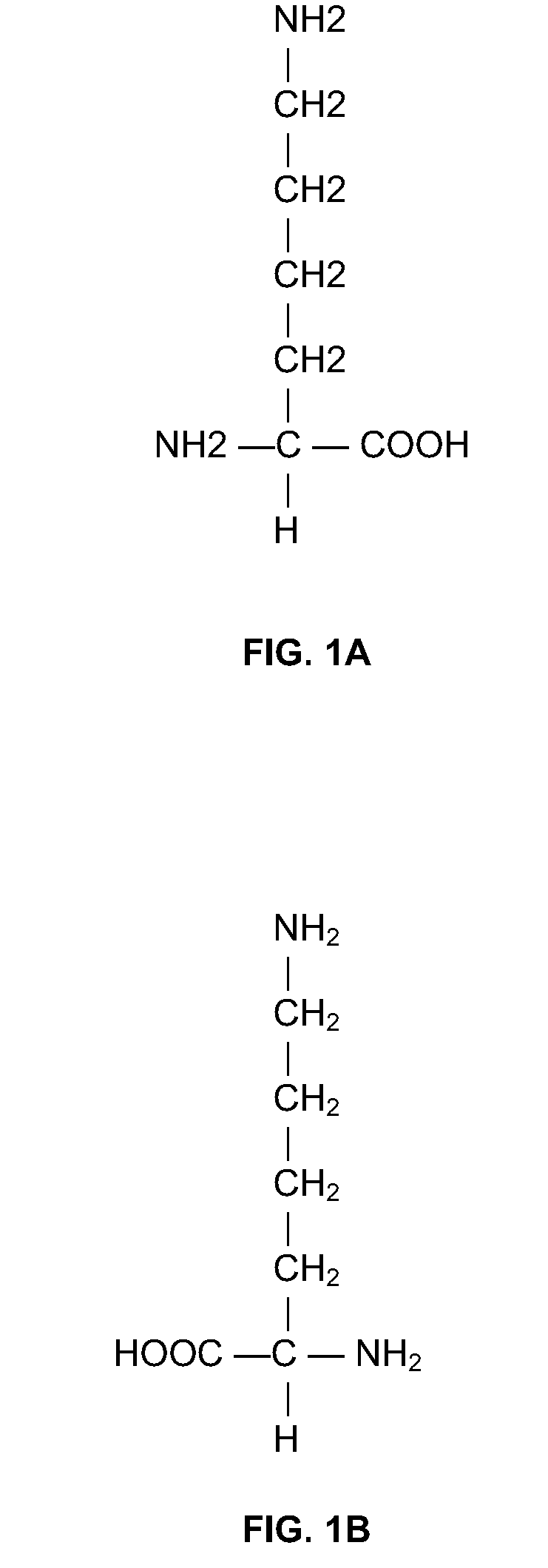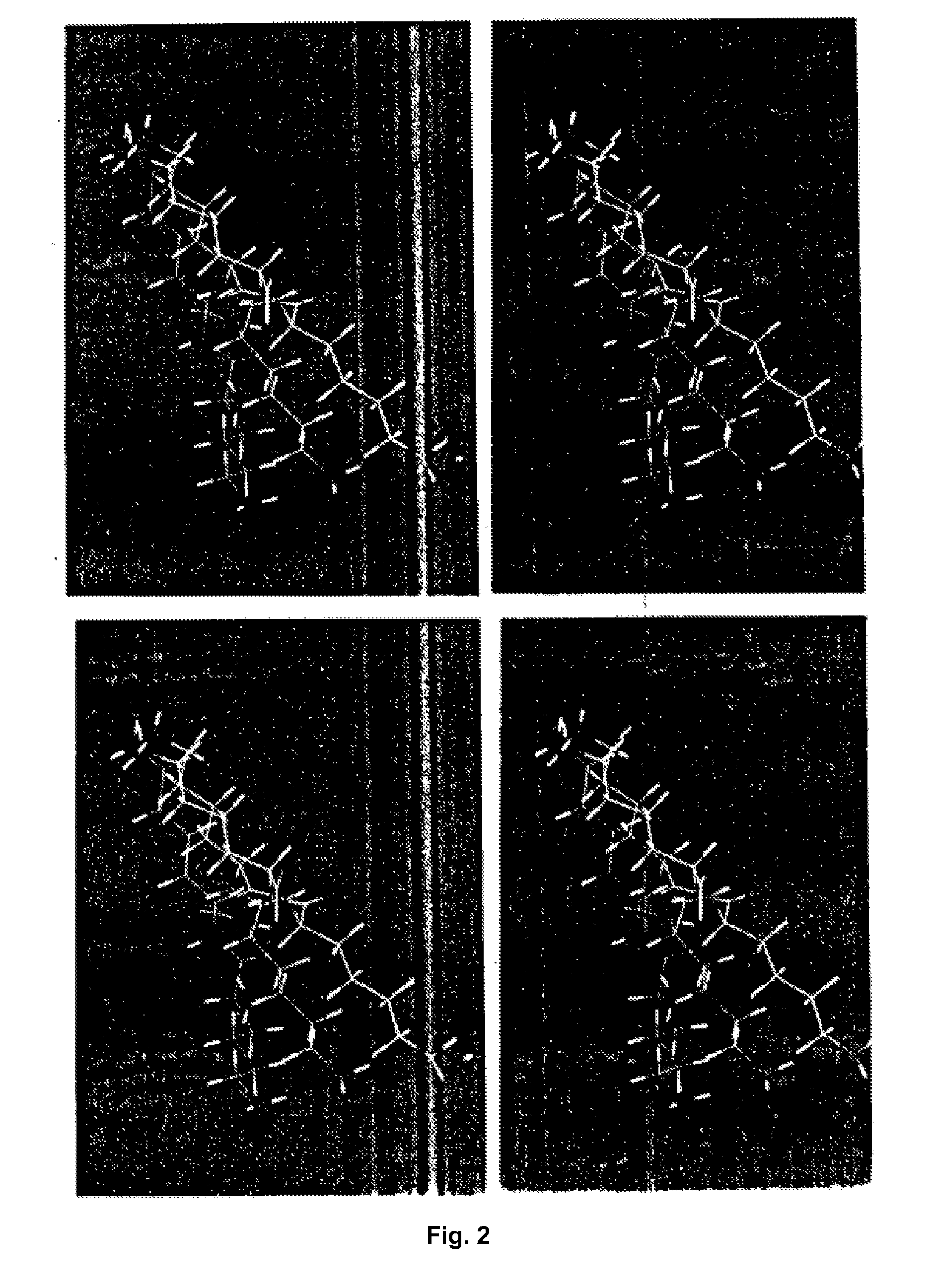Method of treating cancer
a cancer and cancer technology, applied in the field of cancer treatment, can solve the problems of limited therapeutic applicability of some of these compounds, hypoxic tumor cells to be or become refractory, and reduced blood supply to the bulk or core of tumors, so as to enhance the vascular network, controllable effect, and enhance angiogenesis
- Summary
- Abstract
- Description
- Claims
- Application Information
AI Technical Summary
Benefits of technology
Problems solved by technology
Method used
Image
Examples
example 1
Oligo-Lysine and D-Lysine Induced Cell Growth and Angiogenesis In-Vitro and In-Vivo
[0101]Lysine induced repair process depends on the ability of the amino acid / derivative(s) to induce rapid and controlled cellular expansion, both in-vitro and in-vivo. The phenomenon is probably based on the ability of the molecule(s) to act as the cell surface concentrator(s) of circulating growth factor(s). The rapid angiogenic property of the molecule(s) is also entirely dependent on the same phenomenon, where angiogenic factors are concentrated, locally, on the endothelial cell surface receptors, mediated by the molecule(s) working, possibly, as molecular bridges. Oligo-lysine and d-lysine are equally effective (as l-lysine) in inducing rapid cellular growth in-vitro (FIG. 3) and angiogenesis in-vivo.
example 2
Lysine Facilitated Radiation Therapy
[0102]The following example is provide to illustrate treatment of cancer with lysine combination therapy. A Pharmaceutical lysine formulation is administered to cancer patients with cancer types (e.g. cervical carcinoma and head and neck tumors) that contain hypoxic regions.
[0103]The pharmaceutical lysine formulation is administered orally or parenterally. The formulation can contain L- or D-Lysine or both in native or activated form, with or without oligo-lysine of up to mol.wt. of about 5500. Further, the formulation can included suitable additive(s), adjuvant(s) and / or stabilizers, as appropriate. If the formulation contains more that on species of lysine, the species can be present in equal or unequal amounts.
[0104]In a treatment regimen, the pharmaceutical lysine formulation is administered over a period of first 6-7 days. In an alternative treatment regimen, the pharmaceutical lysine formulation is administered over a period of first 48-96 h...
example 3
Lysine Facilitated Cancer Therapy
[0109]The pharmaceutical lysine formulation in the same manner as described in Example 2 is co administered with one or more of the following suitable anticancer compounds: chemotherapeutic agent, hormone therapy agent, gene therapy agent monoclonal antibody agent and polyclonal antibody agent. The enhanced vascular network induced by the angiogenic response of the lysine facilitated treatment increases the delivery of bioavailability of the anticancer compound(s) to the hypoxic layers of tumor cells. Hence, the cell kill per cycle of cancer therapy is enhanced and the number of viable cancer cells in the patients is reduced or even eliminated.
PUM
| Property | Measurement | Unit |
|---|---|---|
| Fraction | aaaaa | aaaaa |
| Fraction | aaaaa | aaaaa |
| Fraction | aaaaa | aaaaa |
Abstract
Description
Claims
Application Information
 Login to View More
Login to View More - R&D
- Intellectual Property
- Life Sciences
- Materials
- Tech Scout
- Unparalleled Data Quality
- Higher Quality Content
- 60% Fewer Hallucinations
Browse by: Latest US Patents, China's latest patents, Technical Efficacy Thesaurus, Application Domain, Technology Topic, Popular Technical Reports.
© 2025 PatSnap. All rights reserved.Legal|Privacy policy|Modern Slavery Act Transparency Statement|Sitemap|About US| Contact US: help@patsnap.com



